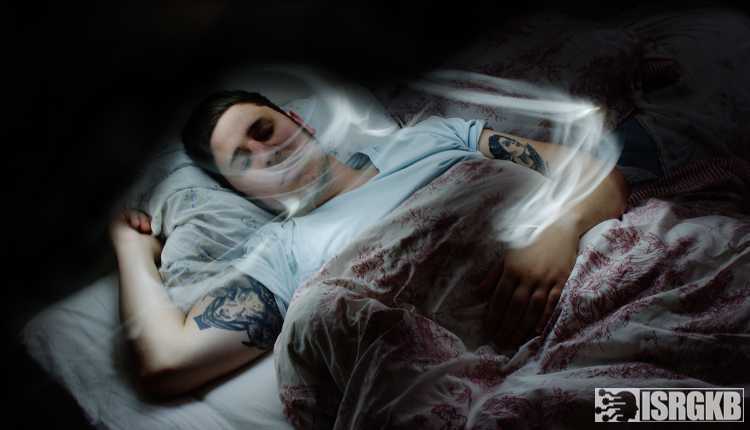Dreams! All of us have them every other night and tend quite to enjoy them. But what dreams actually are? People often try to find out the source of dreams and the science behind them, but even today, dreaming remains to be an area untouched. And we still seem to hold very little knowledge about what they are in the most authentic sense. And so we are faced with questions like are dreams real or virtual! Are they imaginary? Or are they merely a projection of our fears and desires?
A dream can be explained as a sequence of images or thoughts filled with things and surroundings that are unreal, often being subjective to sensations of love, desire, temptations, sadness, anger, etc. Dreams can either be described as chains of serially arranged thoughts and images or some imaginary events occurring intermittently at short intervals. Dreams and nightmares are in many ways similar to each other with some prevailing differences like the respective emotional states at the time of having them. If a person is sad or lonely, then there are more chances for him or her to experience nightmares instead of pleasant dreams. Both dreams and nightmares are related to our subconscious state of mind, which comes in full command while we are asleep. As our conscious mind takes rest and our eyes tend to move back and forth behind the eyelids depicting a state of being fast asleep, dreams and nightmares can be experienced.
This state is called R.E.M state of sleep. There are more theories about dreaming. According to this theory, dreams are nothing but our brain performing its activity in the form of stimuli, signals and random messages being created in the posterior segment of the brain. In other words, the state of dreaming is an unwinding process by which the brain relaxes and virtual images are created as a result of that. The dreams often remembered are just a small part of the more significant journey of our mind while we tend to forget most parts of it.
The 6 types of classified dreams that we mostly see are:
1. Lucid dreams

This type of dream is often experienced by a person who is highly imaginative and has control over his or her life. In lucid dreams, the person undergoing the experience is slightly aware of the fact that whatever things and actions are happening are actually unreal and just parts of a dream.
People with high IQ often experience lucid or vivid dreams. It may sound a bit hard to digest, but it is, in fact, true. For many authors, poets, actors, scientists, doctors have experienced lucid dreams. Such people not only know they are dreaming but actively participate in those dreams without waking up.
You might also be interested in knowing about the Lucid Dreaming 101: A guide to lucid dreaming for beginners.
2. Nightmares

Who amongst us has not experienced nightmares in life? Nightmares are often termed as unfortunate dreams which are disturbing and horrifying and infuse fear into our minds through a series of unpleasant visuals which can be very disturbing and often shocking. Nightmares occur to confront or check on something which we otherwise are trying to ignore. The supreme power has designed a human mind in such a way that we are superior to almost all creatures ever created in ways that we can think and imagine.
From this, imagination, our mind or brain can enhance or edit certain emotions which then give rise to nightmares or horrifying dreams. There can be a number of factors that can trigger a nightmare. These could be due to psychological disorders like PTSD or Post- Traumatic Stress Disorder. Nightmares are common in children and adults with low self-esteem leading a miserable life. Although sometimes many healthy people also experience nightmares.
3. Normal Dreams

Normal dreams are common dreams that are often related to some past memories and generally include friends, relatives or spouses depicting normal conversations just like in real life. But these dreams could also have situations which have not been experienced before and are not very likely to happen in reality. Meeting with actors, falling from a cliff, going to a party or excursion, meeting with an old romance or friend, etc. fall into this category. They could either be interesting or involve normal and boring day-to-day conversations.
4. Recurring Dreams

These dreams are quite a threat to our inner peace as they keep coming back after short intervals and are repetitive in nature! Recurring dreams are often complicated and unpleasant as they torment the person involved even when he or she is awake. Like nightmares, such dreams also disturb a person’s peace of mind by occurring for short durations of time and tend to follow a pattern often resulting in the person having to wake up in the middle of the night with a jolt, while panting and sweating profusely. Scientists and researchers hold such views that recurring dreams are often related to stressful and traumatic experiences from the past or childhood instances of a person.
Where, they are basically trying to recalculate the mishappening, in order to find a solution which they have been otherwise unable to find in real life. Many researchers also relate these to the mysteries of the previous life and can point out to many cases in the world for instances to stand by such theories. Some of the most common recurring dreams are flying, falling into a well, being unprepared for exams, experiencing something from a world unknown in this life, an image, a destination or a set of events taking place in completely alien surroundings, death of near and dear ones, being naked or finding a treasure, etc.
5. Prophetic Dreams

This type of dream is filled with past myths. The dreamer acts as a hero trying to save a tribe or clan as a part of a storyline. The landscapes and attires in such dreams happen to be completely different, including the depicted cultures as well at times. These dreams occur in stages or parts. These dreams are broken and connected both at the same time. You fall asleep, dream, get up, have some water and go to sleep again. Such dreams also keep evolving and take you to experience the adventures and climax to a story being projected to you without your permission.
6. False Awakening

This is the most complex type of dreams since you get to experience this when the conscious and subconscious parts of your mind begin to act at intervals. In a false awakening dream sequence, the dreamer remains in a profound state of sleep and experiences a series of events as parts of a dream which then gets interrupted as he or she wakes up in the middle of the dream. At this point, the dreamer realises he was dreaming and gets up to do whatever work he is supposed to do, but it is only in the dreamer’s imagination that he is working. Because in reality, he is still asleep in his bed while putting the conscious part of his mind to work.
After some time, his subconscious mind takes over again, and he begins to dream. Such a thing happens to follow a sequence wherein the subconscious and conscious parts of the mind of the person take turns to trick him into believing different things. Such an event can go on to occur as frequently as 7 times in one night.
There are many other kinds of dreams, and these differ from person to person. Daydreaming, talking to oneself, seeing God, seeing future events, etc. According to neuroscientists, dreams have many significant functions to perform, which are generally very beneficial for the proper functioning of neurons and our brains in general. Dreaming is considered to be a therapy for our brain that relaxes and prepares it to send out signals to all the important body parts making our day to day activities a possibility.
Dreaming also enhances creativity and problem-solving skills. Dreams act as a bridge between our normal self and the sub-conscious self. Scientists are continuously experimenting to find more substantial and more profound truth behind dreams and nightmares. So it’s safe to say that even though dreams are highly personal, they also bear great psychological significance in the sense that they act as a mirror of our thoughts, anxieties, desires, passions, fears, motivations and so on.

